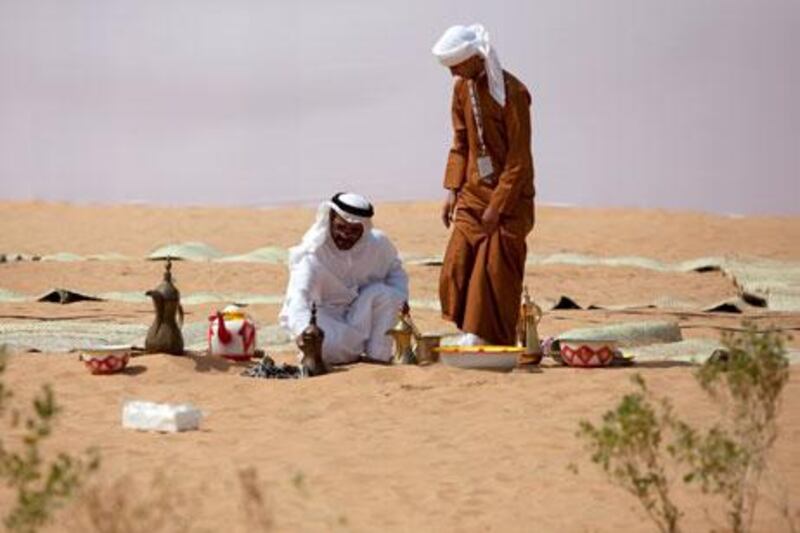By now, everyone in Abu Dhabi has probably at least heard of Qasr Al Hosn, the oldest stone building in the UAE and the place in which Sheikh Zayed, the founding President, had his diwan, or court.
For us, the fort is a cultural and spiritual symbol that tells the story of our history and civilisation.
When Sheikh Zayed became the Ruler of Abu Dhabi in 1966, he moved the royal residence to Al Manhal palace, and kept his office and his public majlis at Qasr Al Hosn.
But over its more than two centuries, the fort has been more than a palace and a diwan, and younger people in particular may not be aware of its whole history.
Qasr Al Hosn has also been a house of justice, a majlis for cultural exchange and communication, a home to Arabian horses, and a place of knowledge and learning.
Foreign delegations used to visit the palace and meet the Rulers to discuss local and international issues.
And it was a place where people used to bring their troubles, seek justice, ask for money and inquire about their basic needs.
Built in the 1760s, the building started as a watchtower to guard over the freshwater well on Abu Dhabi Island.
In 1795, the building was expanded, becoming a small fortress and home to one of Abu Dhabi's first residents and Rulers - Sheikh Shakhbut bin Dhiyab Al Nahyan. It was expanded over the years by successive Rulers.
One of these, Sheikh Shakbut bin Sultan Al Nahyan, added rooms for his family, including one for his brother - Sheikh Zayed.
The fort was also a place of knowledge.
In the 1960s, there was a small library with a collection of about 100 books and 50 articles from academic journals and other sources relating to the Trucial States - the old sheikhdoms of the "coast of Oman" including the seven emirates - and other parts of the Arabian Peninsula and Gulf.
Visitors were allowed to borrow books during their stay.
Today the fort is surrounded by high buildings of steel and glass, but many of the residents of those towers, even Emirati ones, have lost sight of the old palace's significance.
The city has been developing at a remarkable pace and its landscape has changed dramatically in the 41 years since the UAE was founded.
Today, everyone in Abu Dhabi can explain what the Emirates Palace is and knows how to get to the Etihad Towers.
But fewer know very much about Qasr Al Hosn.
In school we studied the history of the UAE over the last 41 years, and something about the time before independence. We learnt about Portuguese and British colonisation of the region, the discovery of oil, independence and the formation of the country and about its founding fathers.
But the current celebrations of the fort’s anniversary gives us all the opportunity to discover more of our past, and as we do it seems to grow richer and become more magnificent. The story of Qasr Al Hosn tells us that we have a richer history that goes back a long way in time.
Qasr Al Hosn is currently under restoration; there are plans to open it as a historical attraction. Enrichment with interpretive material will help greatly in engaging young people in history, and encourage more people to ask questions about their past.
While Qasr Al Hosn has a central place in Emirati history, there are also many other forts and other historical places for people to discover.
Al Jahili Fort in Al Ain, Al Fahidi fort in Dubai, and Al Hisn Sharjah fort are only few examples.
All have interesting stories for us. There is a lot to learn.






